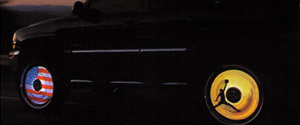What is the way to deceive the sensor installed in Tesla Model S?

ByShal Farley
In May 2016The first death accident occurred in Tesla Model S's "autopilot mode"What I was doing turned out in July. Tesla explained that "autopilot mode could not recognize obstacles correctly", but there is a way that researchers can "deceive" the sensors used in this autopilot mode It was proved.
Hackers Fool Tesla S's Autopilot to Hide and Spoof Obstacles | WIRED
https://www.wired.com/2016/08/hackers-fool-tesla-ss-autopilot-hide-spoof-obstacles/
This was discovered by the University of South Carolina, Zhejiang University in China, joint research team by security company Qihoo 360, on weekendsDEF CON Hacking ConferenceIt is supposed to be reported in.
The autopilot mode installed in Tesla Model S confirms the environment in which the vehicle is placed by three different means: "radar" "ultrasonic sensor" "camera".
The research led the University of South CarolinaXu FumbleAccording to the professor, the teamKey Site TechnologyThe signal generator (about 9.1 million yen) andVirginia diodeofFrequency multiplierWe made a handmade sabotage device using the aircraft and succeeded in deceiving the radar.
You can check the situation with this movie.
Radar Jamming a Tesla Model S - YouTube
Before model S, there is a cart that is not visible, but assumes "a car in front". With the auro pilot function on, the radar will detect this cart and let you know that "There is a car in front" even if it is not visible from the driver. On the screen, the car that is represented by white color is the car in front, which is expressed in blue color.

When you turn on the jamming device ......
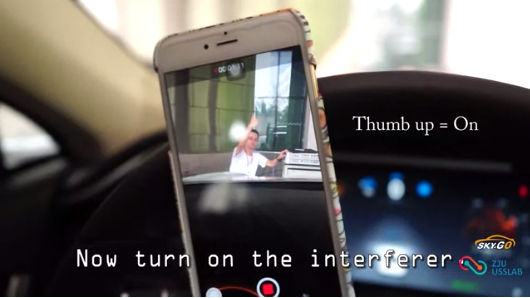
The blue car that existed so far has disappeared. Of course, the cart is not moving.
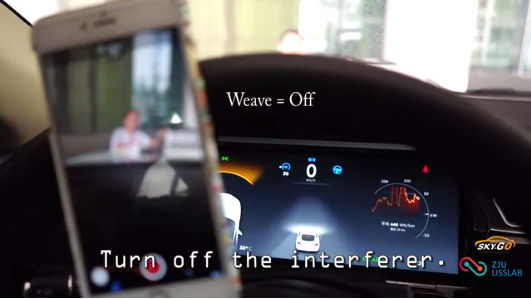
When turning off the jamming device, a blue car appeared.

This test is taking place during a stop, and if you want to do similar "disturbance" while driving at high speed you need to move the jamming equipment to a location according to the position of the car's sensor.
Next, it is an experiment to deceive the ultrasonic sensor used for the function of automatically parking and the function to call from the parking space to the driver. The equipment used here is an ultrasonic transducer and Arduino, and the production cost is about 250 dollars (about 25,000 yen).
Ultrasonic spoofing attack on a Tesla S - WIRED Videos - The Scene
https://thescene.com/watch/wired/ultrasonic-spoofing-attack-on-a-tesla-s
The device is installed in front of the vehicle in this way.
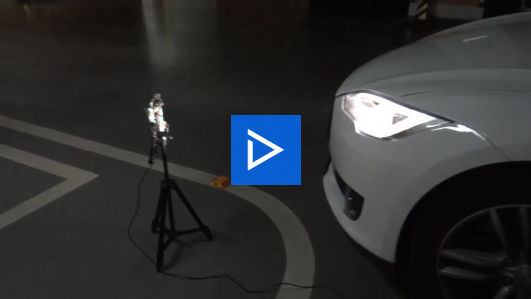
Model S teaches "There is something 66 cm before." But when I switch on the device ......

"Stopped" was displayed. In other words, because the obstacle is nearby, do not move.
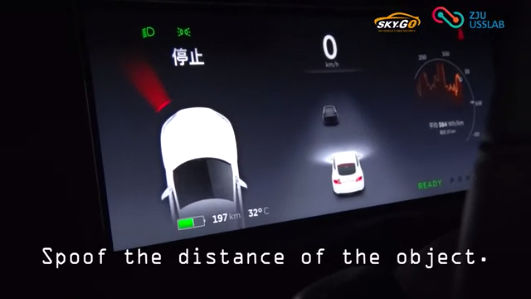
Distance to obstacles is flickering and fluctuating.
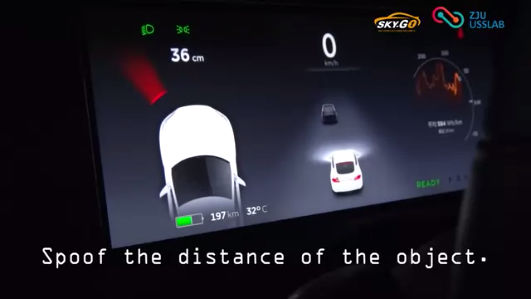
But the device is not working.
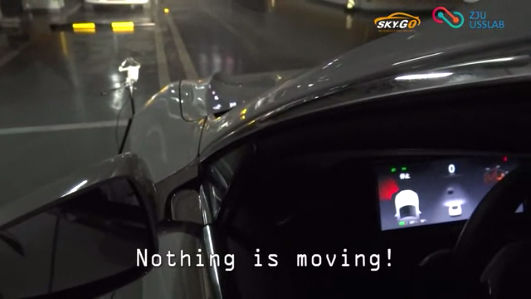
The team has also succeeded in deceiving sensors in an easier way.
Defeating a Tesla S's ultrasonic sensors with cloaking - WIRED Videos - The Scene
https://thescene.com/watch/wired/defeating-a-tesla-s-s-ultrasonic-sensors-with-cloaking
When a person crosses the front of the car, the sensor is reacting.
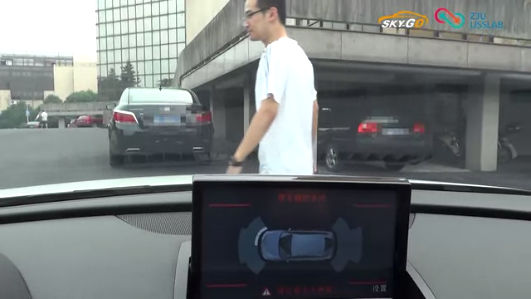
However, to wear a rough urethane foam used as a protective member ......

Although it crossed the front of the car, the sensor did not respond. It is as if it is becoming a transparent human being.
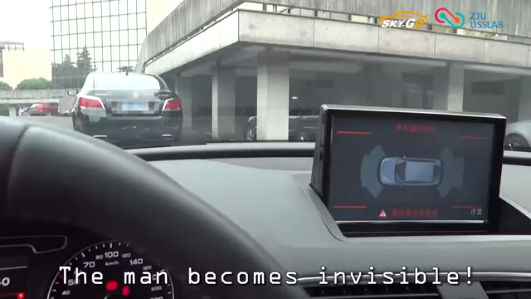
I tried passing through in the "form skirt" state wrapped around the waist without covering the whole body ......
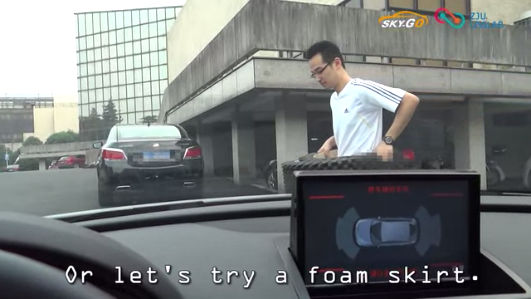
After all it did not react.
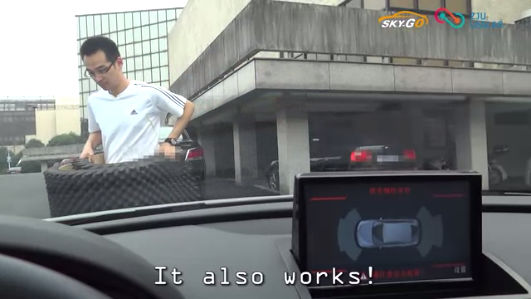
Professor Xu has acknowledged that although this test was effective in terms of "whether to fool sensors," it is not necessarily practical. However, the results of this experiment are not limited to Tesla, and it seems that manufacturers should be careful with each manufacturer.
Related Posts:







